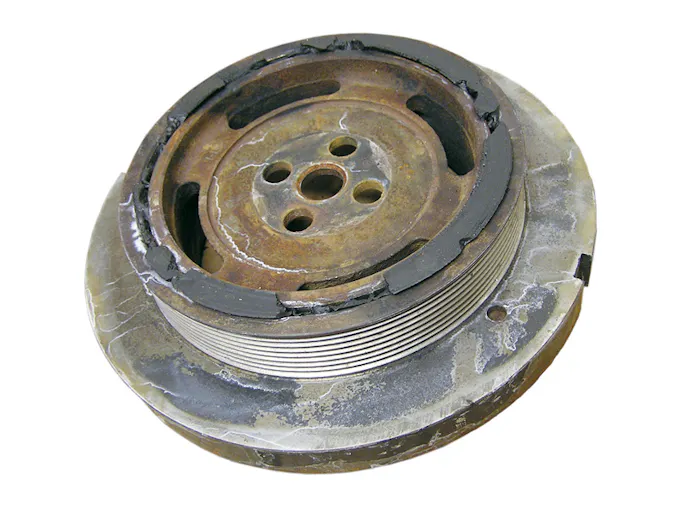The vast majority of vehicles come from the factory with an elastomer-style harmonic damper, designed to protect the engine against harmful harmonic vibrations. Elastomer is a rubber-type material that is tuned to a specific frequency that the OE has determined can be harmful to the engine. This is great – until the engine is modified to work at higher RPM ranges and put out more horsepower, then it’s not nearly as effective.
According to the fine folks at Fluidampr, simple upgrades like cold-air intake systems, exhaust systems, and even a tuner can change the amplitude of the engine’s vibrations, and ultimately cause a failure of the damper more quickly than if the vehicle was left in stock form.
The added power causes the stock damper to work harder, which will cause the rubber to wear out more quickly. Fluidampr recommends inspecting the elastomer layer regularly for any type of cracking, bulging, or missing material – these are the warning signs that the damper is reaching critical mass and may not be properly damping the harmful frequencies.
Other things to consider when inspecting the damper are its age, exposure to the elements (harsher climates will cause it to wear out more quickly), and even whether the damper has been subjected to an excessive oil leak or any harmful solvents during its life – all of these things can impact its performance.
For more information on the complete lineup of Fluidampr’s products, check out their website.
You might also like
PRI 2025: ATI Reveals Lightweight Modular Trigger Shell For Precision Crank Signals
ATI’s Lightweight Modular Trigger Shell cuts 3lbs and integrates with 7-inch dampers for cleaner EFI signals.



